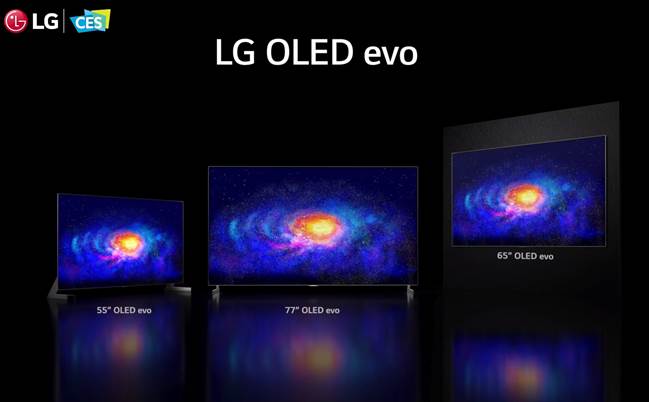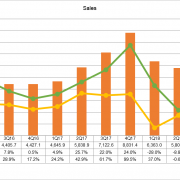CES2021에서 선보인 다양한 OLED 제품들
세계 최대 IT 가전 전시회 CES가 사상 처음으로 100% 온라인으로 개최되었다.
삼성에서는 CES2021마지막날 14일(현지시간 15일)에 Galaxy S21 시리즈를 발표하였다.
갤럭시S시리즈 최초로 S펜을 지원한다 15일부터 21일까지 일주일간 사전 예약을 거쳐, 오는 29일 정식 출시될 예정이다.

(삼성전자 홈페이지 GalaxyS21 series)
LG디스플레이에서는 세계최초 롤러블 TV인 LG SIGNATURE OLED R은 현신적인 글로벌 콤팩터로 사용자의 공간을 재정의하는 올레드의 철학과 기술을 멋지게 뽐냈다. 침대와 투명 OLED가 결합된 Smart Bed는 평소에는 일반 침대 프레임으로 사용하다가, 투명 OLED를 일부만 노출시키는 ‘라인모드’로 변경해 날씨나 시간 정보를 간단하게 확인할 수 있다. 여기서 16:9 화면비로 전환하면 TV나 영화 감상이 가능하다

또 다른 활용 예시로 선보인 Restaurant Zone의 55” 투명 OLED는 스시바 등의 고급 식당에서 디지털 메뉴판 역할을 수행하는 것은 물론, 주문한 음식이 나오는 동안 투명 스크린을 통해 스포츠 중계나 드라마 시청도 가능하다. 더불어 손님과 셰프 사이의 파티션으로도 활용할 수 있다.

LG디스플레이가 이번 CES 2021에서 최초로 선보인 48” 벤더블 CSO(Cinematic Sound OLED)은 유력 해외 매체들의 관심을 한 몸에 받았다. 이 기술은 종이처럼 얇은 두께의 OLED 화면이 최대 1,000R까지 구부러져 한층 몰입감 있는 화면을 제공하며, 화면 자체에서 소리가 나는 CSO 기술이 적용돼 더욱 생생하고 입체감 있는 사운드를 들려준다.

LG전자는 CES2021에서 새로운 OLED TV “evo”가 소개되었다. Flagship 모델인 evo는 55인치, 65인치, 77인치 4K OLED 3 종류가 있다.
Evo는 LG전자 OLED TV 중에서 가장 고급 브랜드인 G1 레벨 제품으로서 신형 화질 프로세스 A9 Gen 4를 탑재하였으며, 이전 모델에 비해 선명한 화질과 명암비, HDR(High-Dynamic-Range)을 제공해 준다.

LG OLED evo(출처 CES2021 영상)
LG전자에서는 31.5” OLED 모니터 UltraFine 32EP950를 선보였다. TV나 휴대폰에서만 사용하였던 OLED패널이 모니터로 최초로 선보였으며 4K 해상도 (3840×2160) 1,000,000 : 1의 명암비로, 아직 출시일과 가격은 공개되지 않았다

LG 31.5” UltraFine 32EP950 모니터 (출처 CES2021 영상)
LG전자는 롤러블폰 티저영상을 공개했다. LG롤러블의 알려진 스펙은 기본 6.8”(1080×2428)에 화면을 펼치면 7.4”(1600×2428)까지 확장 가능한 것으로 전해졌다. 중국 디스플레이 업체인 BOE의 패널을 사용했다.

LG전자 롤러블 폰 (출처 CES2021 영상)
Panasonic에서는 OLED TV JZ2000를 선보였다. LG디스플레이 패널을 사용하였고, 2021년에 55” 65” 로 출시한다고 발표했다. 새로운 AI 기반의 프로세서를 갖추고 있어 시청자가 최고의 영상과 사운드 설정을 자동으로 조정해준다. Panasonic의 고유한 상향식 스피커 사용에 측면 발사 스피커를 추가하면서 뛰어난 서라운드 사운드를 제공하여 영화, 스포츠, 게임 경험을 향상시킨다. 더 나은 피크 및 평균 밝기 레벨을 제공하여 고픔질 TV 영상을 제공한다.

Panasonic JZ2000 (출처 CES2021 영상)
Sony의 Acoustic Surface Audio 기술은 잠재적으로 Sony의 새로운 OLED 모델을 최고의 사운드 TV로 만들 수 있게 하였다. 이 카테고리에서 특히 주목할 부분은 Sony Bravia Master Series A90J이다. 이 OLED TV는 55” 및 65” 모델과 함께 83” 모델을 도입하며, Sony가 XR OLED Contrast라고 부르는 새로운 기술을 사용하여 하이라이트를 높이고 더 나은 블랙을 제공한다.

Sony Bravia Master A90J(출처 CES2021 영상)
TCL에서는 두 가지의 Rollable OLED 컨셉을 선보였다. 첫번째는 6.7”디스플레이를 최대 7.8”지 확장 할 수 는 AMOLED 모바일 장치이다. 두께가 10mm 미만이고 굴곡 반경이 3mm이다. 두번 째는 17” printed scrolling 제품은 CSOT에서 두루마리형태의 컨셉용으로 공개했다.


TCL rollable 컨셉 폰 과 17” 컨셉 scrolling 제품(출처 CES2021 영상)
자동차용 p-OLED용으로는 Mercedes-Benz 와 Continental 업체에서 제품을 공개 했다.
자동차 부품업체 Continental은 haptic 기술이 지원되는 cockpit type 디스플레이를 소개하였다. LG디스플레이의 pOLED를 사용한 것으로 추정된다.

Continental pOLED (출처 CES2021 영상)
Mercedes-Benz에서는 56” MBUX(Mercedes-Benz User Experience) Hyperscreen multimedia system은 12.8인치 pOLED를 3장 연결하고 Gorilla glass로 커버하였다. 운전 중 패널의 아이콘 부분 터치를 확인하기 위해 pOLED에는 haptic 기술이 내장되었다.

Mercedes-Benz에서는 56” MBUX (출처 CES2021 영상)







 <엘지전자, OLED TV R>
<엘지전자, OLED TV R>



























